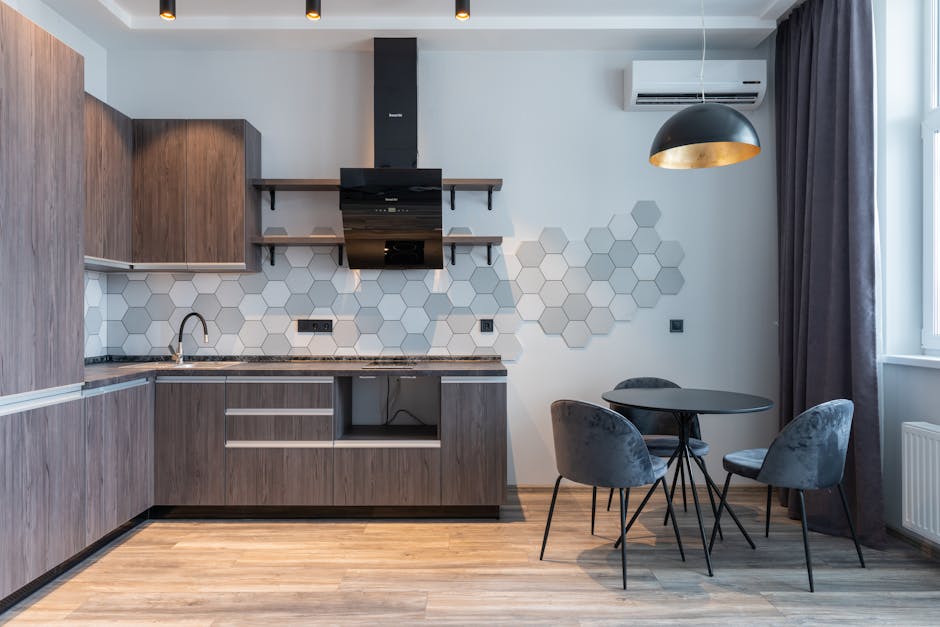Introduction to Ductless AC Installation
Ductless AC, also known as mini-split systems, are a game changer for keeping your house cool. Unlike traditional central air conditioning, these units don’t need a maze of ducts to work. This means you can say goodbye to the energy lost through ductwork. It’s simple: less energy lost equals more money saved. Installing a ductless AC involves mounting indoor units directly in the rooms you want to cool and connecting them to an outdoor compressor. It’s straightforward and can be done without tearing open your walls. Plus, you can control the temperature in each room individually, which means you’re only cooling the spaces you use. This personalized cooling approach not only enhances your comfort but also lowers your energy bills, making ductless AC an efficient choice for your home.
Understanding the Efficiency of Ductless AC Systems
Ductless AC systems, also known as mini-split systems, are a game-changer when it comes to cooling your home efficiently. Unlike traditional systems, they don’t require a network of ducts to distribute air throughout your house. This key difference is where the magic happens. First, ducts are notorious for leaks and inefficiencies, meaning a lot of the cool air never makes it to the rooms you’re trying to cool. Ductless systems send cool air directly where it’s needed, slashing energy loss dramatically.
Here’s the deal: Ductless systems operate on less power because they are smaller and target specific areas in your home. This means you’re not wasting energy cooling rooms that are empty or don’t need as much air conditioning. What’s more, many ductless AC systems come with what’s called zoning capabilities. This allows you to create different temperature zones in your house. Say you like your living room cooler than your bedroom; zoning makes that easy and energy-efficient.
The efficiency of ductless AC systems is also enhanced by their variable speed compressors which adjust cooling output to the demand. Unlike traditional ACs that are either full blast or off, ductless systems fine-tune their operation, using only as much energy as needed. This precision not only conserves energy but also means lower monthly bills for you.
So, in a nutshell, ductless AC systems cut down on wasted energy by avoiding duct leaks, allowing for targeted cooling, offering zoning capabilities, and adjusting their operation with variable speed compressors. All these features add up to significant savings on your energy bills. Plus, they’re generally quicker and less invasive to install, meaning you can start saving sooner rather than later.
The Role of Ductless AC in Reducing Energy Bills
Ductless AC, also known as a mini-split system, slashes your energy bills by working more efficiently than traditional systems. Unlike old-school ACs that push air through ducts, ductless systems deliver air directly into different zones of your home. This direct approach cuts out losses associated with ductwork, which can account for more than 30% of energy consumption, especially if the ducts are in an unconditioned space like an attic. By targeting specific areas, ductless AC allows you to cool only the spaces you use. You won’t be wasting money cooling empty rooms. Plus, most ductless systems have higher SEER ratings (that’s the measure of an air conditioner’s efficiency) compared to traditional units. This means they use less energy to keep you cool, further reducing your bills. With the ability to control temperatures in individual rooms, you’re looking at significant savings on your energy bills. Quick to install and requiring minimal maintenance, ductless AC systems are a smart choice for anyone looking to cut down on energy costs. Remember, investing in efficiency pays off, keeping more money in your pocket over time.
Cost Comparison: Ductless AC vs. Traditional Systems
When you’re weighing ductless AC against traditional systems, the initial price tag might make you pause. Here’s the thing, though – look at the long game. Ductless mini-split systems might hit your wallet harder up front. We’re talking about an average of (3,000 to )5,000 per unit, compared to traditional central air systems which can be roughly (5,000 to )9,000, depending on your home’s specifics. But, hang on, it’s not just about the initial cost. Running costs are where ductless systems shine. They’re real energy misers, cutting down your energy bills significantly because they cool only the spaces you use. No more cooling empty rooms! Plus, they’re kinder to the environment. So, while you might spend a bit more at the start, the monthly savings on your energy bills will soon catch up, making the ductless system a wallet-friendly choice in the long run. Keep those numbers in mind when deciding.
How Ductless AC Installation Impacts Home Energy Use
Ductless AC, also known as mini-split systems, cut down on energy use and save you money. Here’s how. Traditional AC systems push air through ducts, losing energy along the way. Ductless systems deliver air directly into different zones in your house. This direct path means you’re not wasting energy cooling unused spaces. Also, ductless systems use less power because they’re smaller and targeted. Another point is they often have a higher Seasonal Energy Efficiency Ratio (SEER), indicating better energy use. By shifting to ductless AC, you could see your energy bills drop significantly. It’s a smart move for both your wallet and the planet.
Maximizing Savings with Proper Ductless AC Placement
When you’re looking to squeeze out the most savings from your ductless AC, putting it in the right spot is key. It might seem like a small thing, but the placement affects how hard your unit works, which in turn impacts your energy bills. Here’s the lowdown: You want to install the indoor unit in a place where air can flow freely without obstructions. Think open space, away from furniture or curtains. This helps it cool or heat effectively without straining.
Direct sunlight is a big no-no. If your unit is constantly in the sun’s path, it’ll have to fight harder to keep you cool, eating up more energy. Aim for a shady spot or at least away from direct sunlight for most of the day.
Height matters, too. Since hot air rises, installing the unit high up on a wall typically means it cools more efficiently. Most folks find a height of about 6 to 8 feet off the ground to be the sweet spot.
Lastly, think about where you hang out the most in your home. Positioning the unit in a central location, or where your family spends a lot of time, means you get the most bang for your buck. Cooling or heating an area that’s rarely used is like pouring money down the drain.
So, before drilling holes and mounting your new ductless AC, take a moment to plan. A little thought on placement goes a long way in slashing those energy bills.
Tips for Maintaining Your Ductless AC to Ensure Efficiency
Keeping your ductless AC in tip-top shape isn’t just about staying cool; it’s about keeping your bills low. Here’s how. First, clean the filters. Dirty filters make your AC work harder, which eats more energy. Set a reminder to do this monthly. Second, keep an eye on the outdoor unit. Make sure it’s free of leaves, dirt, and debris that can hinder airflow and efficiency. Third, ensure the indoor unit is not blocked by furniture or curtains. Proper airflow is key. Lastly, schedule regular professional checkups. An expert can spot issues you might miss and prevent costly repairs down the line. Stick to these steps and watch your energy bills drop.
The Long-term Financial Benefits of Ductless AC Installation
Switching to a ductless AC system can be a smart way to save some cash on your energy bills. Here’s the deal – these systems are way more efficient than traditional central HVAC systems. Why? Because they directly cool the rooms you’re using, without wasting energy on the ones you’re not. No ducts mean no loss of cool air through leaks or poorly insulated ductwork. What’s more, they can save you up to 30% on your cooling costs compared to conventional AC systems. They’re not just about efficiency, though. Ductless systems are also known for their longevity. With proper care, they can keep your place cool for well over 20 years. So, while the upfront cost might pinch a little, the long-term savings are substantial. Your wallet will thank you down the road. Plus, many utility companies offer rebates for installing energy-efficient systems like these, which can help offset the initial investment. In short, going ductless isn’t just good for the planet – it’s great for your bank account too.
Rebates and Incentives for Ductless AC Installation
When you decide to install a ductless AC system, you’re not just paying for the equipment and installation. There’s a silver lining: rebates and incentives. Many utility companies offer financial incentives for homeowners who choose energy-efficient appliances like ductless AC systems. These rebates can significantly lower the initial cost. Additionally, federal, state, or local governments might offer tax credits or rebates as part of their efforts to encourage energy efficiency. To find out what rebates and incentives are available, check with your utility company and look into government websites dedicated to energy savings. Remember, these incentives aren’t just a one-time perk. They’re an investment in lowering your energy bills and making your home more eco-friendly right from the start. So, if you’re considering a ductless AC, it pays to do a bit of research—you could save a good chunk of change.
Conclusion: Is Ductless AC Installation Right for You?
To wrap it up, if you’re eyeing a way to cut down on energy bills, ductless AC could be a solid bet. It’s especially appealing if you’re in a setup where extending or installing ductwork is impractical or way too pricey. Consider the perks: lower running costs, the flexibility of installation, and the potential for zoned cooling and heating. However, weigh these against the initial investment since ductless systems can be more expensive upfront. But, for those focused on energy efficiency and reducing long-term costs, the investment often pays off. In the end, if saving on energy bills, increasing home comfort, and opting for a potentially greener option sound like your cup of tea, ductless AC installation might just be the right move for you.


